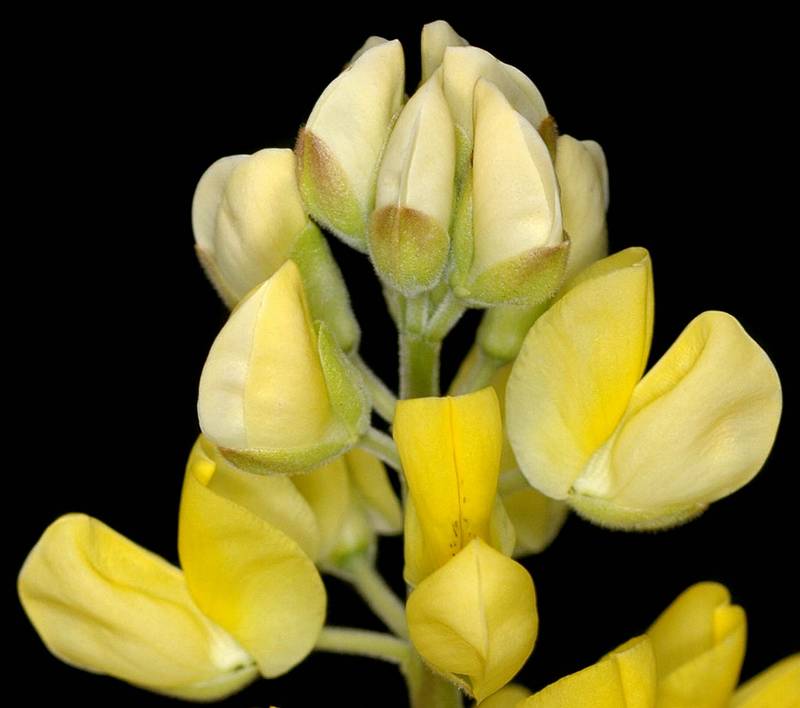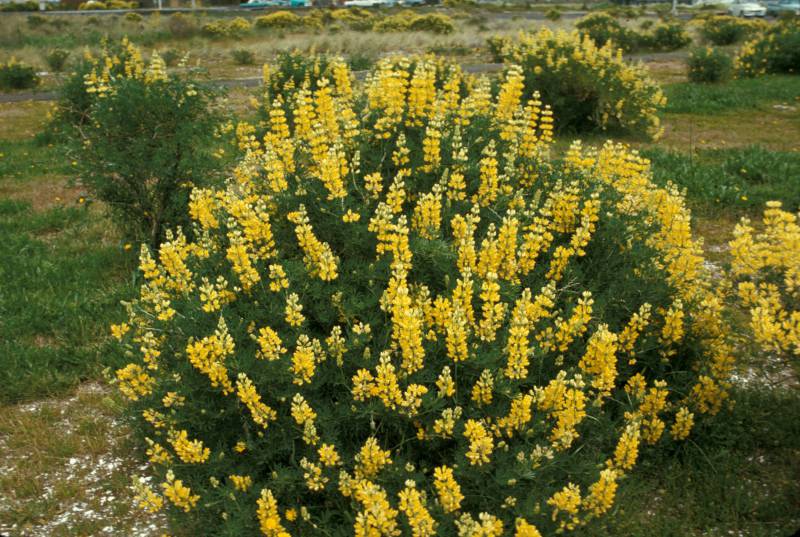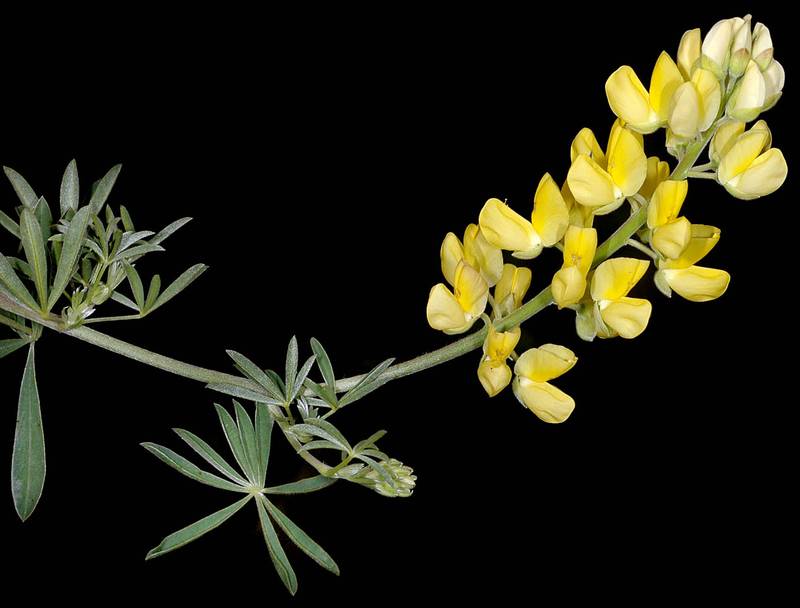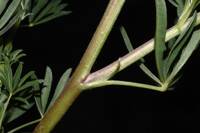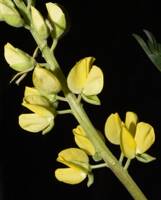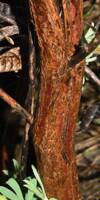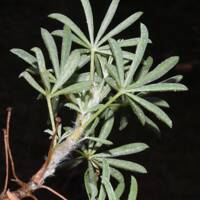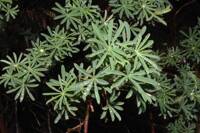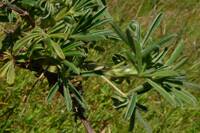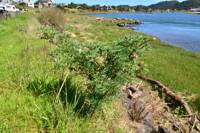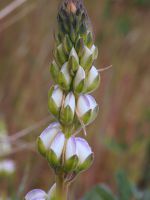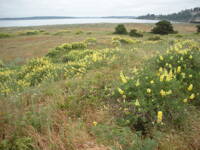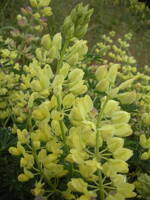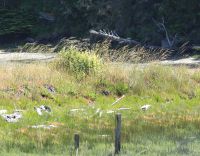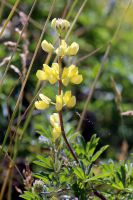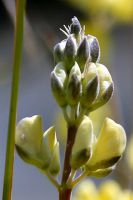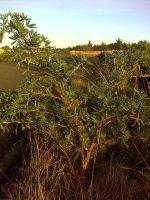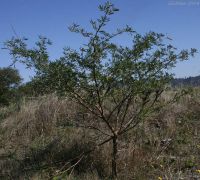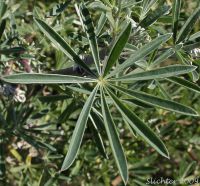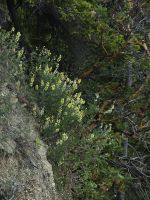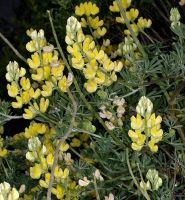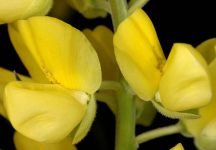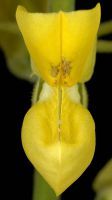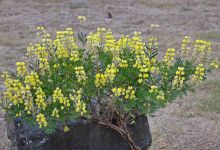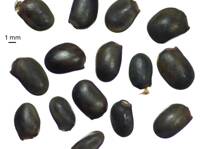Distribution: Occurring chiefly west of the Cascades crest in Washington in the lowlands and along the Pacific coast; British Columbia to California.
Habitat: Sandy soil at low elevations, often where disturbed.
Flowers: May-September
Origin: Introduced from California, where native
Growth Duration: Perennial
Conservation Status: Not of concern
Pollination: Bumblebees, bees, flies, butterflies, beetles, wasps
Diffusely branched, shrubby perennial 1-2 m. tall, from deep, heavy roots, silky to pubescent.
Leaves numerous; leaflets 5-11, oblanceolate, 3-6 cm. long, puberulent to silky.
Inflorescence of numerous, loose racemes, 1-2.5 dm. long; flowers 14-18 mm. long, yellow, the banner often somewhat purplish; pedicles 4-9 mm. long; calyx puberulent, two-lipped; banner well reflexed, glabrous; keel sickle-shaped, with marginal hairs.
Pods 4-6 cm. long and 1 cm. broad, hairy.
Publication: Bot. Mag. 18: pl. 682. 1803.
PNW Herbaria: Specimen records of Lupinus arboreus in the Consortium of Pacific Northwest Herbaria database
WA Flora Checklist: Lupinus arboreus checklist entry
OregonFlora: Lupinus arboreus information
E-Flora BC: Lupinus arboreus atlas page
CalPhotos: Lupinus arboreus photos

